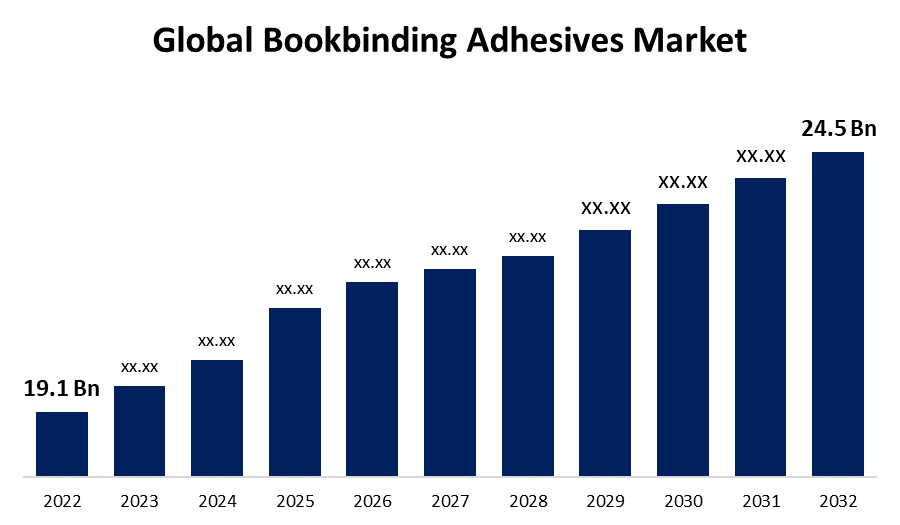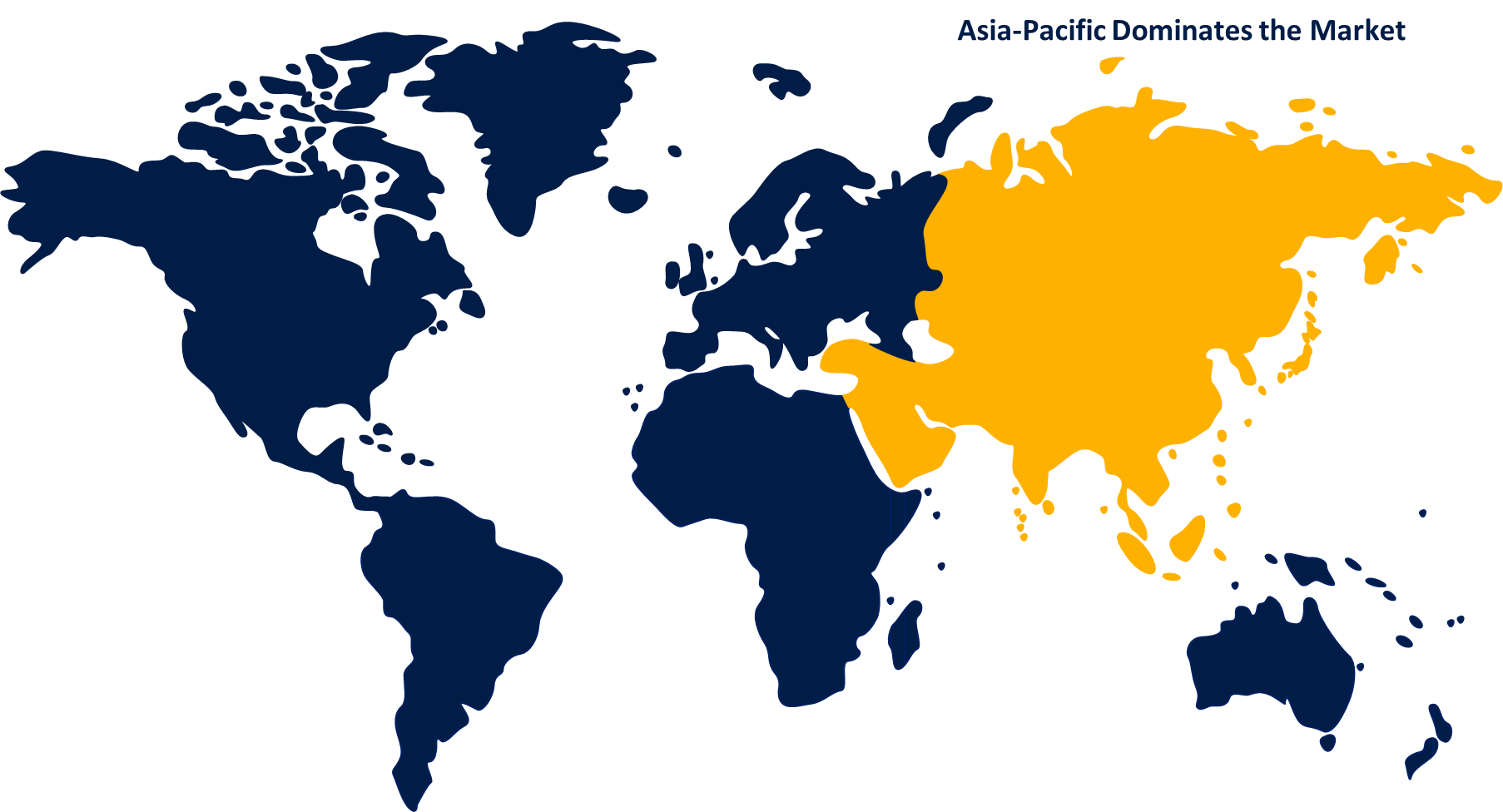Global Bookbinding Adhesives Market Size To Worth USD 24.5 Billion by 2032 | CAGR of 3.3%.
Category: Chemicals & MaterialsGlobal Bookbinding Adhesives Market Size Worth USD 24.5 Billion by 2032
According to a research report published by Spherical Insights & Consulting, the Global Bookbinding Adhesives Market Size to grow from USD 19.1 Billion in 2022 to USD 24.5 Billion by 2032, at a Compound Annual Growth Rate CAGR of 3.3% during the forecast period.

Get more details on this report -
Browse key industry insights spread across 200 pages with 110 market data tables and figures & charts from the report on the “Global Bookbinding Adhesives Market Size, Share, and COVID-19 Impact By Technology Type (Emulsion-based and Hot Melt), By Chemistry Type (Polyvinyl Acetate, Vinyl Acetate Ethylene, Polyurethane, Others), By Application (Hardcover and Softcover Books, Magazines and Catalogs, Print on Demand, Others), by Region (North America, Europe, Asia-Pacific, Latin America, Middle East, and Africa), Analysis and Forecast 2022 – 2032.” Get Detailed Report Description Here: https://www.sphericalinsights.com/reports/bookbinding-adhesives-market
Bookbinding adhesives are a requirement for binding books, magazines, and other printed products. The durability and longevity of the bound documents depend on these adhesives. There are numerous types of bookbinding adhesives that can be used, each having special qualities and applications. There are various global adhesive manufacturers that cater to customers worldwide. Ideas and technology may be shared as a result of this globalisation, which aids in market expansion. The availability of bookbinding adhesives through online buying channels has expanded the market's reach and made it easier for smaller businesses and individuals to obtain a variety of adhesive materials. Preservation and archival adhesives continue to be important in the bookbinding sector, particularly for organisations like libraries, museums, and archives.
COVID 19 Impact
Lockdowns, travel restrictions, and facility closures disrupted global supply networks, delaying the production and delivery of bookbinding adhesives. This resulted in supply shortages and extended lead times for manufacturers of adhesives and bookbinders. Due to the outbreak, a lot of companies and academic institutions switched to remote management, which decreased the need for printed materials. Especially in sectors like corporate publishing, commercial printing, and educational publishing, this resulted in a decline in the need for bookbinding adhesives. The epidemic necessitated postponing or rescheduling book launches, which created issues for the publishing industry. The volume of orders placed by manufacturers changed as a result, which affected the demand for bookbinding adhesives.
The health and growth of the publishing industry have a direct impact on the market for bookbinding adhesives. Modifications in reading habits, the desire for printed items, and publishing trends can all have an impact on adhesive demand. Innovations in adhesive technology, such as the development of stronger, more flexible, and ecologically friendly adhesives, can promote market growth by offering improved performance and durability. For the preservation of books and documents in libraries, museums, and archives, specialised archival adhesives that abide by rigid preservation standards are needed. This specialised market segment could expand as a result of the increased emphasis on historical preservation. Due to the accessibility of bookbinding adhesives through e-commerce platforms and online marketplaces, the market has expanded and become more accessible to small businesses.
The shift from printed to digital media has had an effect on the demand for printed goods, especially books. Adhesive and bookbinder producers must adapt to changing consumer preferences as well as the increased popularity of e-books and online content. Variations in the price of raw materials like the polymers and chemicals used in adhesive formulations can have an impact on the manufacturing costs and profit margins for adhesive makers. The bookbinding adhesives market is fiercely competitive, with numerous manufacturers offering identical products. Competing on price, quality, and innovation can be challenging. Technical advancements may encourage market expansion, but they can also provide challenges because producers must invest in R&D to maintain their competitiveness and meet shifting consumer needs.
Type Insights
Hot melt segment to hold the highest market share over the forecast period
On the basis of type, the global bookbinding adhesives market is segmented into Emulsion-based and Hot Melt. Among these, the hot melt segment is going to hold the highest market share over the forecast period. Because they swiftly bond, hot melt adhesives are a preferred choice for high-speed bookbinding processes in commercial printing and publishing. The capacity to quickly produce bound materials is a crucial advantage for meeting tight production deadlines. The longevity and tensile strength of bonded materials are ensured by the firm bond created by hot melt adhesives. Particularly for publications that will be handled and read frequently, this is essential. Productivity and precision may be improved when automation and robotics are combined with hot melt technology in bookbinding techniques, which will support the growth of this market sector. As the printing and publishing industry expands, including with digital printing and on-demand book production, hot melt technology will undoubtedly continue to advance into new industries.
Chemistry Type Insights
Vinyl acetate-ethylene segment is dominating the market over the forecast period
Based on the chemistry type, the global bookbinding adhesives market is segmented into Polyvinyl Acetate, Vinyl Acetate Ethylene, Polyurethane, Others. Among these, the vinyl acetate-ethylene segment is dominating the market over the forecast period. Among the substrates that VAE-based adhesives cling best to include paper, cardboard, and fabric. This adhesive strength is crucial in bookbinding in order to preserve the longevity of the binding. VAE adhesives are often easy to apply in bookbinding operations, whether by human or automated means, and frequently demonstrate good wet tack, which aids in early adhesion. Manufacturers can design VAE adhesives to meet a range of requirements, including different degrees of flexibility, adhesion strength, and curing times. This configurable flexibility can be used to satisfy various bookbinding requirements. Due to its versatility, VAE-based adhesives can be used with a variety of bookbinding methods, including perfect binding, case binding, and spine reinforcement.
Application Insights
Hardcover and softcover books segment is witnessing a huge market growth over the forecast period
On the basis of application, the global bookbinding adhesives market is segmented into Hardcover and Softcover Books, Magazines and Catalogs, Print on Demand, Others. Among these, the hardcover and softcover books segment is witnessing a huge market growth over the forecast period. Hardcover books are typically chosen for high-end publishing, gift books, and special editions due to their elegant design. Adhesives that can preserve the structural integrity of hardcover bindings, including the cloth or paper covers, are required to meet these aesthetic standards. Even paperback editions of hardcover books often cost more to produce than softcover books. Demand for them may rise as a result of the availability of affordable bookbinding adhesives that are effective with softcover books. For a very long period, hardcover volumes can be kept in libraries and archives. Adhesives used in these applications must meet strict archival quality specifications to guarantee the preservation of irreplaceable content. More people are looking for softcover books that were made using sustainable materials and with eco-friendly adhesives.
Regional Insights
Asia Pacific region holds the highest market share over the forecast period

Get more details on this report -
Asia Pacific is dominating the market with the highest market share over the forecast period. Among the key publishing markets in APAC, which are all rapidly increasing, are China, India, Japan, South Korea, and Australia. The expansion of the publishing industry in these countries has increased the demand for bookbinding adhesives. Despite the impact of the digital revolution on book sales around the world, particularly in the APAC region, print is still widely utilised and many publishers continue to produce physical books. There is still a need for bookbinding adhesives despite certain shifts in customer preferences. APAC nations require archival-quality bookbinding adhesives to preserve their priceless and rare manuscripts because of their rich cultural and historical heritage.
North America, on the other hand is witnessing the fastest market growth over the forecast period. In North America, the publishing sector is well-established, with the US and Canada serving as two of the major participants. This industry publishes a wide variety of publications, including books, journals, and instructional materials. The shift to digital media, which has altered consumer reading preferences and habits, has had an impact on the publishing industry. However, the market for bookbinding adhesives persists, and print still has a large impact on the North American economy. The usage of modern adhesive and bookbinding instruments has had an impact on the market for bookbinding adhesives. The demand for adhesives that are compatible with digital printing and rapid binding methods has increased.
List of Key Companies
- H.B. Fuller Company
- Henkel AG
- Dow Chemical Company
- Arkema Group
- Avery Dennison Corporation
- Beardow Adams
- Sika AG
- Jowat SE
- Exxon Mobil Corporation
- Sanyhot Adhesivos S.A.
- Embagrap SA
- Bostik
- Franklin International
- Lord Corporation
- Hubei Huitian Adhesive Enterprise Co. Ltd.
- Ashland
Market Segment
This study forecasts revenue at global, regional, and country levels from 2019 to 2032. Spherical Insights has segmented the global Bookbinding Adhesives Market based on the below-mentioned segments:
Bookbinding Adhesives Market, Type Analysis
- Emulsion-based
- Hot Melt
Bookbinding Adhesives Market, Chemistry Type Analysis
- Polyvinyl Acetate
- Vinyl Acetate Ethylene
- Polyurethane
- Others
Bookbinding Adhesives Market, Application Analysis
- Hardcover and Softcover Books
- Magazines and Catalogs
- Print on Demand
- Others
Bookbinding Adhesives Market, Regional Analysis
- North America
- US
- Canada
- Mexico
- Europe
- Germany
- Uk
- France
- Italy
- Spain
- Russia
- Rest of Europe
- Asia Pacific
- China
- Japan
- India
- South Korea
- Australia
- Rest of Asia Pacific
- South America
- Brazil
- Argentina
- Rest of South America
- Middle East & Africa
- UAE
- Saudi Arabia
- Qatar
- South Africa
- Rest of Middle East & Africa
About the Spherical Insights & Consulting
Spherical Insights & Consulting is a market research and consulting firm which provides actionable market research study, quantitative forecasting and trends analysis provides forward-looking insight especially designed for decision makers and aids ROI.
Which is catering to different industry such as financial sectors, industrial sectors, government organizations, universities, non-profits and corporations. The company's mission is to work with businesses to achieve business objectives and maintain strategic improvements.
CONTACT US:
For More Information on Your Target Market, Please Contact Us Below:
Phone: +1 303 800 4326 (the U.S.)
Phone: +91 90289 24100 (APAC)
Email: inquiry@sphericalinsights.com, sales@sphericalinsights.com
Contact Us: https://www.sphericalinsights.com/contact-us
Need help to buy this report?